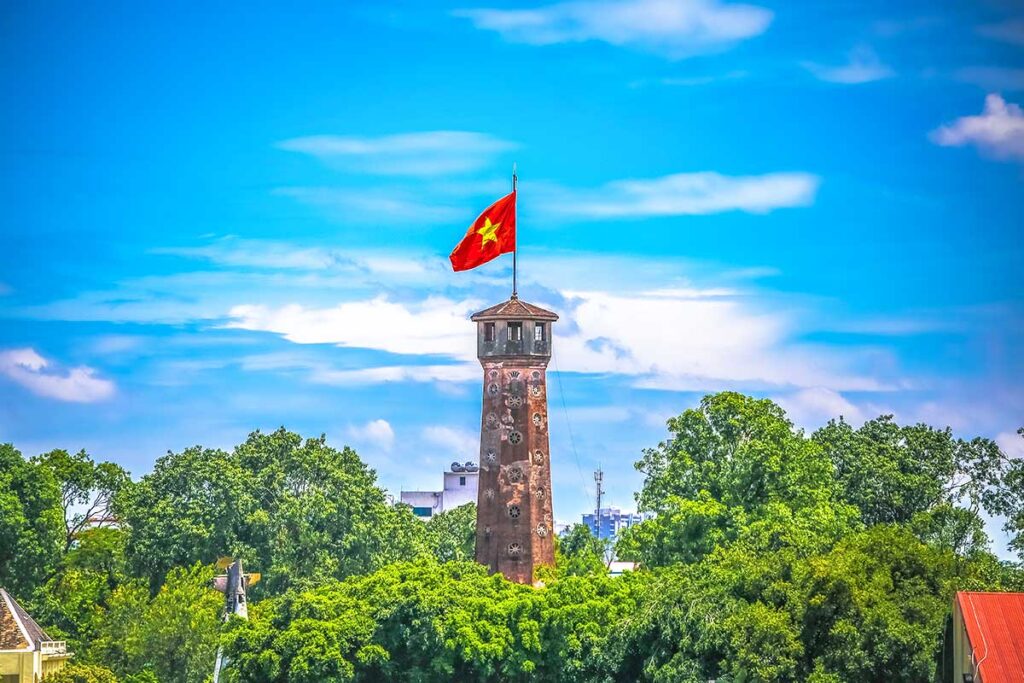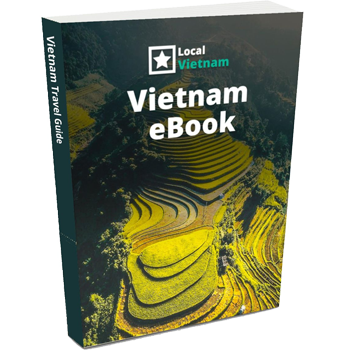1. Hanoi Flag Tower
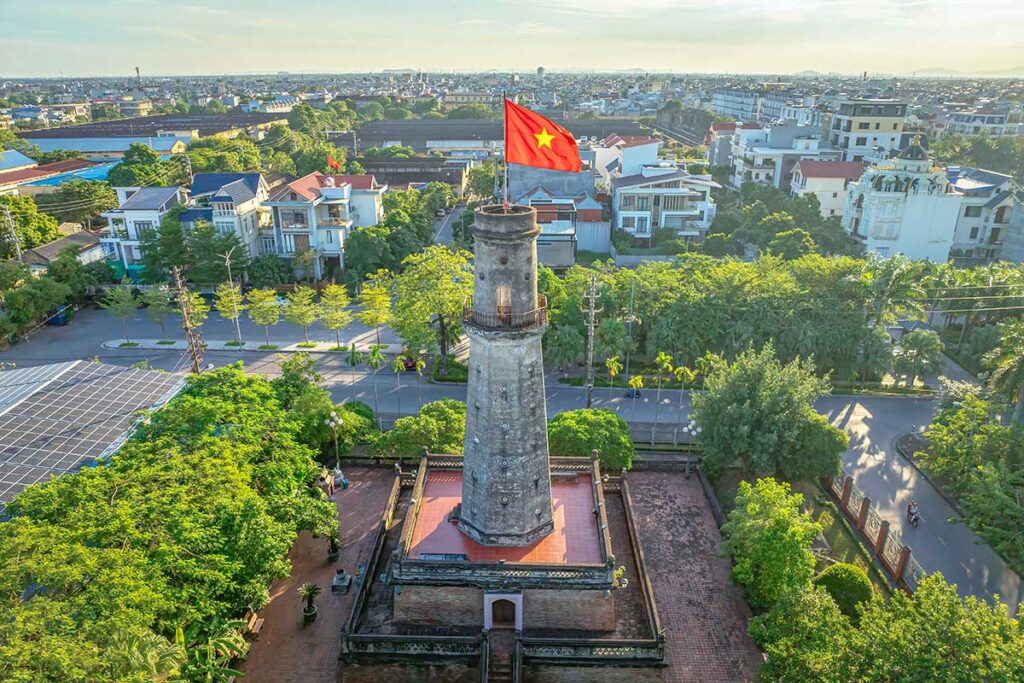
Constructed in 1812 during the Nguyễn Dynasty, the Hanoi Flag Tower is one of the few surviving vestiges of the ancient Thăng Long Imperial Citadel. Rising around 33 meters, it once served as a military watchtower and symbol of authority, and today it remains one of the most recognizable landmarks of the capital. Its three-tiered base and distinctive fan-shaped openings give it both strength and architectural character.
The tower stands within the Imperial Citadel of Thăng Long complex on Hoàng Diệu Street, a UNESCO World Heritage site. It is open daily from 8:00 AM to 5:00 PM, and the current ticket price is 100,000 VND per adult and children under 16 can enter for free. Visitors cannot climb inside the tower, but it is a striking feature of the citadel grounds, with the national flag flying proudly above. Its central location makes it easy to combine with nearby sights such as Ba Đình Square, the Ho Chi Minh Mausoleum, and the Temple of Literature.
2. Hue Flag Tower
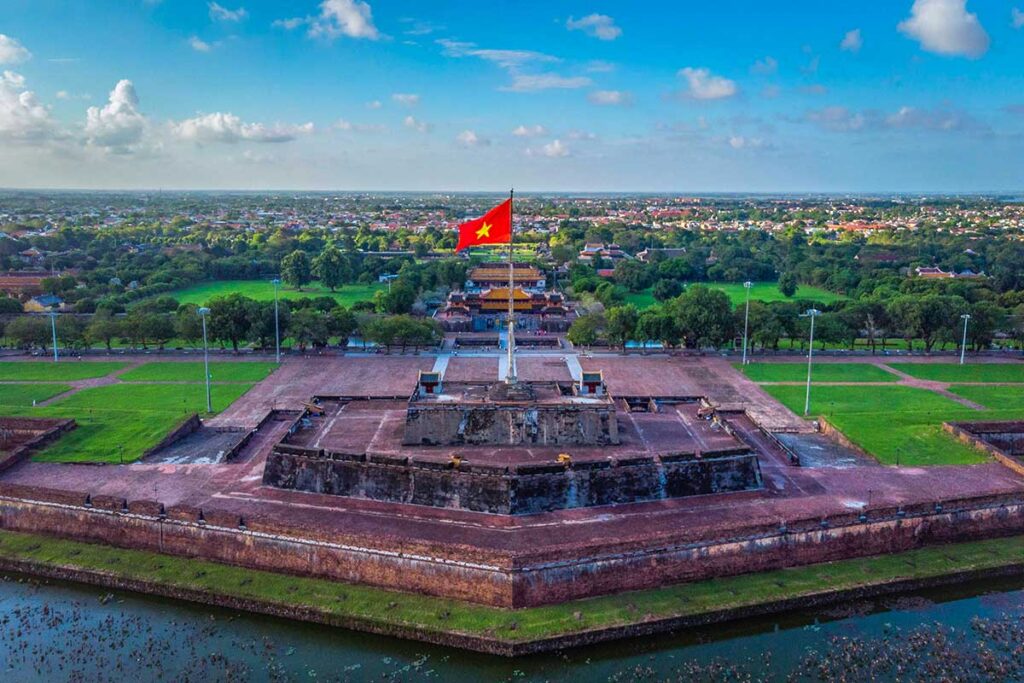
The Hue Flag Tower, built in 1807 under Emperor Gia Long, stands at the southern entrance of the Imperial Citadel and has long been a symbol of the former royal capital. Rising 37 meters with its three-tiered base, it played an important role in Nguyen Dynasty ceremonies and later became a site of national significance during key historical moments, including the wars of the 20th century. Its position facing the Perfume River makes it one of the most photographed landmarks of Hue, especially when the red national flag is flying high above the citadel walls.
Today, the flag tower is easily visible from many parts of the city, particularly along the riverside and the Trang Tien Bridge. Visitors cannot climb the tower itself, but it forms part of the larger Hue Citadel complex, which requires an entrance ticket (200,000 VND for adults). The best views are from outside the Citadel gates or across the river, especially at sunset when the lighting is dramatic. Since the area can get hot and exposed during midday, early morning or late afternoon visits are the most comfortable times to appreciate both the tower and the surrounding Imperial City.
3. Lung Cu Flag Tower
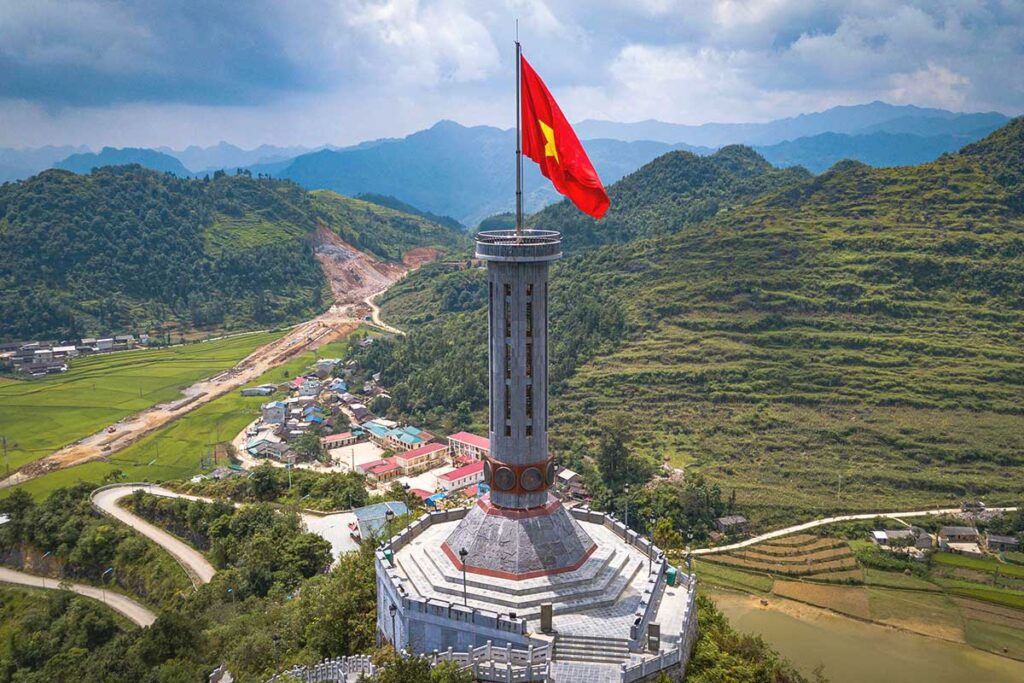
The Lung Cu Flag Tower marks the northernmost point of Vietnam, just a few kilometers from the border with China, and has become a powerful symbol of national sovereignty. Originally a smaller structure, it was expanded in 2010 to its current height of 33 meters, standing proudly on Dragon Mountain at nearly 1,500 meters above sea level. Flying a massive national flag measuring 54 square meters, representing Vietnam’s 54 ethnic groups, the tower embodies both geographic and cultural significance.
Visiting Lung Cu involves a steep climb of over 800 steps, though the panoramic views of terraced fields, mountain ranges, and Hmong villages make the effort worthwhile. Entry tickets are inexpensive (around 20,000 VND), and it’s usually open from morning until late afternoon. The area can get very windy and cold in winter, while fog may limit views during certain seasons. Most travelers visit Lung Cu as part of a Ha Giang Loop itinerary, and while the site itself is relatively small, it’s the journey through remote landscapes and ethnic villages that makes the experience memorable.
4. Hien Luong Flag Tower
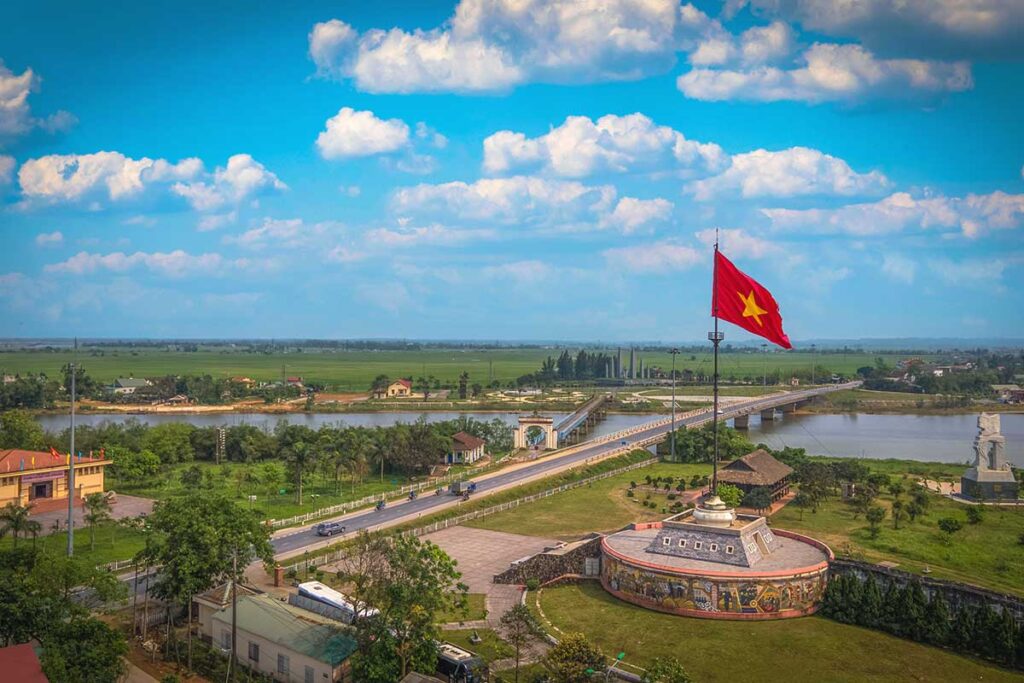
The Hien Luong Flag Tower stands on the north bank of the Ben Hai River in Quang Tri Province, right at the line that once divided Vietnam into North and South. From 1954 until 1975 this river formed the heart of the Demilitarized Zone (DMZ), making the tower and the Hien Luong Bridge some of the most symbolic landmarks of the Vietnam War. During those years, both sides raised huge flags here to assert their presence, and today the tower remains a powerful reminder of separation and reunification.
Most travelers visit the tower as part of a DMZ trip from Hue or Dong Ha, stopping at the bridge and the small museum next to it. There is no fee for the tower itself, though crossing the historical bridge require a ticket. The stop is quick—30 minutes is usually enough—but its meaning becomes much deeper when combined with other DMZ sites such as the Vinh Moc Tunnels, Khe Sanh Combat Base, or Truong Son Cemetery. The area is very exposed to the sun, so early morning or late afternoon are the most comfortable times to visit.
5. Thu Ngu Flag Tower
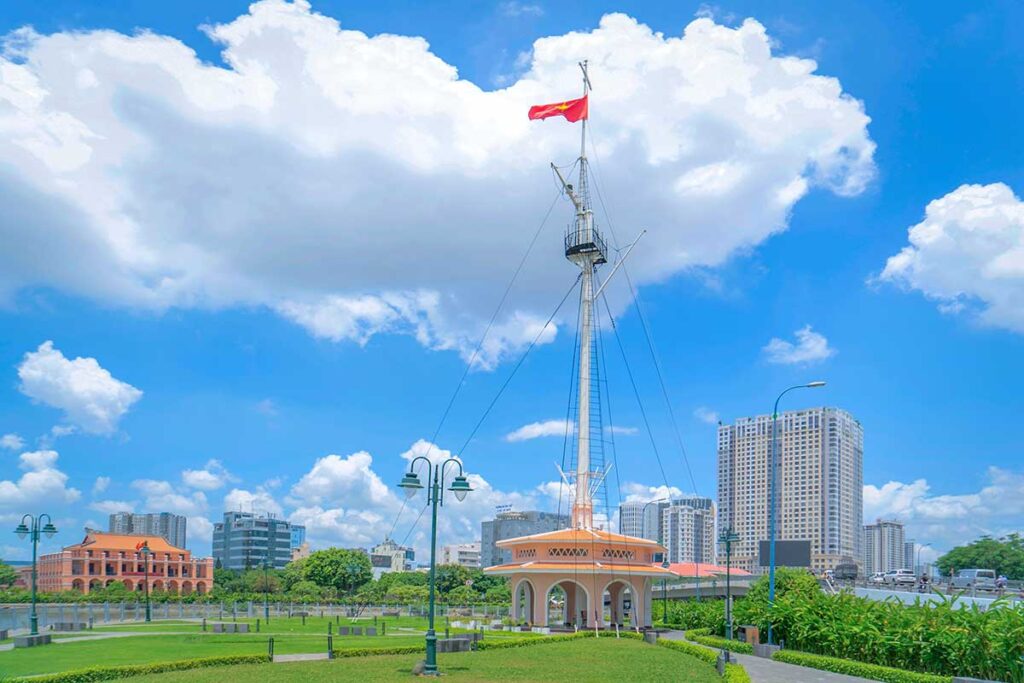
The Thu Ngu Flag Tower in Ho Chi Minh City was originally built in 1865 by the French colonial authorities as a signal tower for ships arriving on the Saigon River. Located near Bach Dang Wharf, it played an important role in guiding vessels into the busy port and later became one of the city’s enduring riverside landmarks. Though less grand than Hanoi or Hue’s flag towers, its colonial history and riverside position give it a distinct character tied to Saigon’s maritime past.
Today, the flag tower remains standing on Ton Duc Thang Street, close to the modern Nguyen Hue Walking Street and Bach Dang pier. You cannot climb the structure, but it’s easy to spot while strolling along the riverfront or before taking a ferry or dinner cruise. There is no entrance fee, and most people only spend a few minutes here while exploring the riverside area. The tower is best visited in the evening when the riverside promenade is lively, and it can be combined with nearby attractions such as the Ho Chi Minh City Opera House, Nguyen Hue pedestrian street, or a boat trip on the Saigon River.
